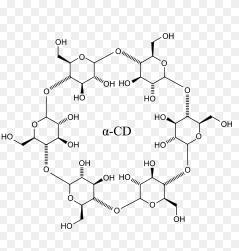Powdered alcohol may hit markets in September

Powdered alcohol is made by binding alcohol molecules to sugars. Although Lipsmark has not released their recipe for Palcohol, powdered alcohol molecules have been in existence since the 1970s.
Palcohol, or powdered alcohol, was invented by wine educator Mark Phillips, who says he created it so that it would be easier to carry alcohol on the go. The company that owns Palcohol, Lipsmark, plans to release packets of six different flavors that, when mixed with five ounces of liquid, make a shot’s worth of alcohol.
Although The Alcohol and Tobacco Tax and Trade Bureau (TTB) approved Palcohol on April 8, the statement was withdrawn thirteen days later. The TTB claims the original approval was an error, but Lipsmark stated that the withdrawal was due to differences in the fill-levels of each packet.
In the meantime, some people have raised concerns about Palcohol being snorted and concealed by minors.
“It just seems very dangerous in that you can control how much alcohol you’re consuming,” said Nephele Troullinos (11).

According to palcohol.com, snorting is unlikely because “it takes approximately 60 minutes to snort the equivalent of one shot of vodka.” The site also dismisses the idea of concealing it, as “the package Palcohol comes in is 4″ x 6″….almost five times bigger than a 50ml bottle of liquid alcohol.”
The company claims that the use of Palcohol can expand beyond its intended use as an inebriant. Their website alleges that Palcohol could be developed to save money by the airline industry, or to use as an antiseptic.
Despite its theoretical applications, not everyone shares the opinion that Palcohol will become a useful product.
“I think it’s completely stupid,” said Andrew Irvine, Harker chemistry teacher. “The way I understand it, they’re making a complex of sugars around the ethanol so that it can be in a dry form. However, that powder will have a greater mass and volume than just pure ethanol by itself.”
He also pointed out that alternative ways to carry portable quantities of alcohol already exist. “You could just buy grain alcohol and add that to water. People do that all the time. At the end of the day, it’s a nice gimmick, but […] there’s a bunch of chemistry behind it that doesn’t make sense from my perspective.”
If powdered alcohol succeeds in being re-approved by the TTB, it could either change the American liquor market or fade into obscurity. For now, it sits at a crossroads between fame and failure.
This piece was originally published in the pages of The Winged Post on May 16, 2014.

Vivian Isenberg, a senior, is the Humor & Satire editor on Harker Aquila. She was a member of the yearbook staff her freshman year and has been on...

Meilan Steimle (12) is co-Editor-in-Chief of the Winged Post. She was a reporter her freshman year, Winged Post Opinion Editor her sophomore year and Winged...


















![“[Building nerf blasters] became this outlet of creativity for me that hasn't been matched by anything else. The process [of] making a build complete to your desire is such a painstakingly difficult process, but I've had to learn from [the skills needed from] soldering to proper painting. There's so many different options for everything, if you think about it, it exists. The best part is [that] if it doesn't exist, you can build it yourself," Ishaan Parate said.](https://harkeraquila.com/wp-content/uploads/2022/08/DSC_8149-900x604.jpg)




![“When I came into high school, I was ready to be a follower. But DECA was a game changer for me. It helped me overcome my fear of public speaking, and it's played such a major role in who I've become today. To be able to successfully lead a chapter of 150 students, an officer team and be one of the upperclassmen I once really admired is something I'm [really] proud of,” Anvitha Tummala ('21) said.](https://harkeraquila.com/wp-content/uploads/2021/07/Screen-Shot-2021-07-25-at-9.50.05-AM-900x594.png)







![“I think getting up in the morning and having a sense of purpose [is exciting]. I think without a certain amount of drive, life is kind of obsolete and mundane, and I think having that every single day is what makes each day unique and kind of makes life exciting,” Neymika Jain (12) said.](https://harkeraquila.com/wp-content/uploads/2017/06/Screen-Shot-2017-06-03-at-4.54.16-PM.png)








![“My slogan is ‘slow feet, don’t eat, and I’m hungry.’ You need to run fast to get where you are–you aren't going to get those championships if you aren't fast,” Angel Cervantes (12) said. “I want to do well in school on my tests and in track and win championships for my team. I live by that, [and] I can do that anywhere: in the classroom or on the field.”](https://harkeraquila.com/wp-content/uploads/2018/06/DSC5146-900x601.jpg)
![“[Volleyball has] taught me how to fall correctly, and another thing it taught is that you don’t have to be the best at something to be good at it. If you just hit the ball in a smart way, then it still scores points and you’re good at it. You could be a background player and still make a much bigger impact on the team than you would think,” Anya Gert (’20) said.](https://harkeraquila.com/wp-content/uploads/2020/06/AnnaGert_JinTuan_HoHPhotoEdited-600x900.jpeg)

![“I'm not nearly there yet, but [my confidence has] definitely been getting better since I was pretty shy and timid coming into Harker my freshman year. I know that there's a lot of people that are really confident in what they do, and I really admire them. Everyone's so driven and that has really pushed me to kind of try to find my own place in high school and be more confident,” Alyssa Huang (’20) said.](https://harkeraquila.com/wp-content/uploads/2020/06/AlyssaHuang_EmilyChen_HoHPhoto-900x749.jpeg)


